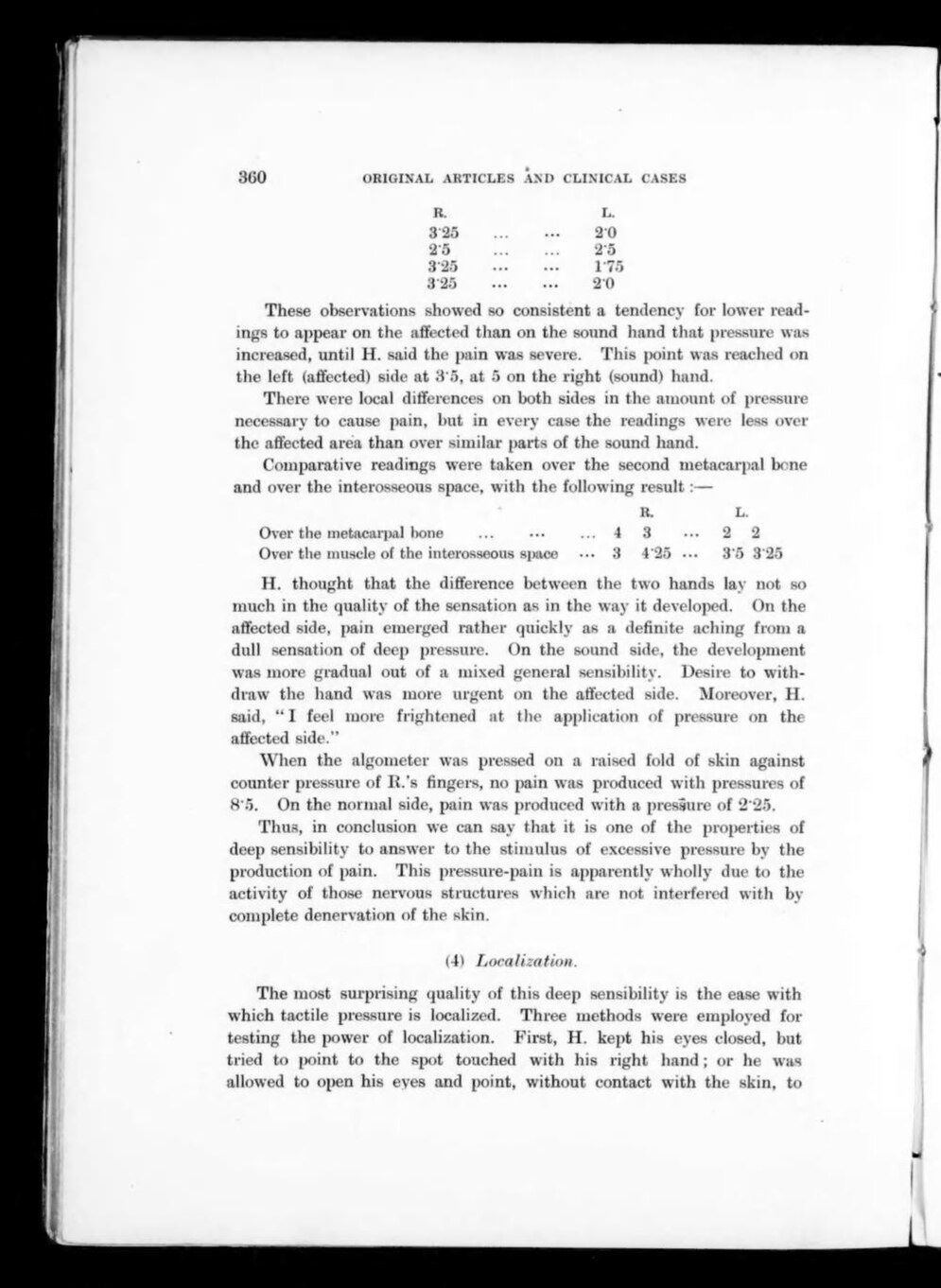| R. | L. |
|---|---|
| 3·25 | 2·0 |
| 2·5 | 2·5 |
| 3·25 | 1·75 |
| 3·25 | 2·0 |
These observations showed so consistent a tendency for lower readings to appear on the affected than on the sound hand that pressure was increased, until H. said the pain was severe. This point was reached on the left (affected) side at 3·5, at 5 on the right (sound) hand.
There were local differences on both sides in the amount of pressure necessary to cause pain, but in every case the readings were less over the affected area than over similar parts of the sound hand.
Comparative readings were taken over the second metacarpal bone and over the interosseous space, with the following result:—
| R. | L. | |||
|---|---|---|---|---|
| Over the metacarpal bone | 4 | 3 | 2 | 2 |
| Over the muscle of the interosseous space | 3 | 4·25 | 3·5 | 3·25 |
H. thought that the difference between the two hands lay not so much in the quality of the sensation as in the way it developed. On the affected side, pain emerged rather quickly as a definite aching from a dull sensation of deep pressure. On the sound side, the development was more gradual out of a mixed general sensibility. Desire to withdraw the hand was more urgent on the affected side. Moreover, H. said, "I feel more frightened at the application of pressure on the affected side."
When the algometer was pressed on a raised fold of skin against counter pressure of R.'s fingers, no pain was produced with pressures of 85. On the normal side, pain was produced with a pressure of 2.25.
Thu in conclusion we can say that it is one of the properties of deep sensibility to answer to the stimulus of excessive pressure by the production of pain. This pressure-pain is apparently wholly due to the activity of those nervous structures which are not interfered with by complete denervation of the skin.
(4) Localization.
The most surprising quality of this deep sensibility is the ease with which tactile pressure is localized. Three methods were employed for testing the power of localization. First, H. kept his eyes closed, but tried to point to the spot touched with his right hand; or he was allowed to open his eyes and point, without contact with the skin, to
